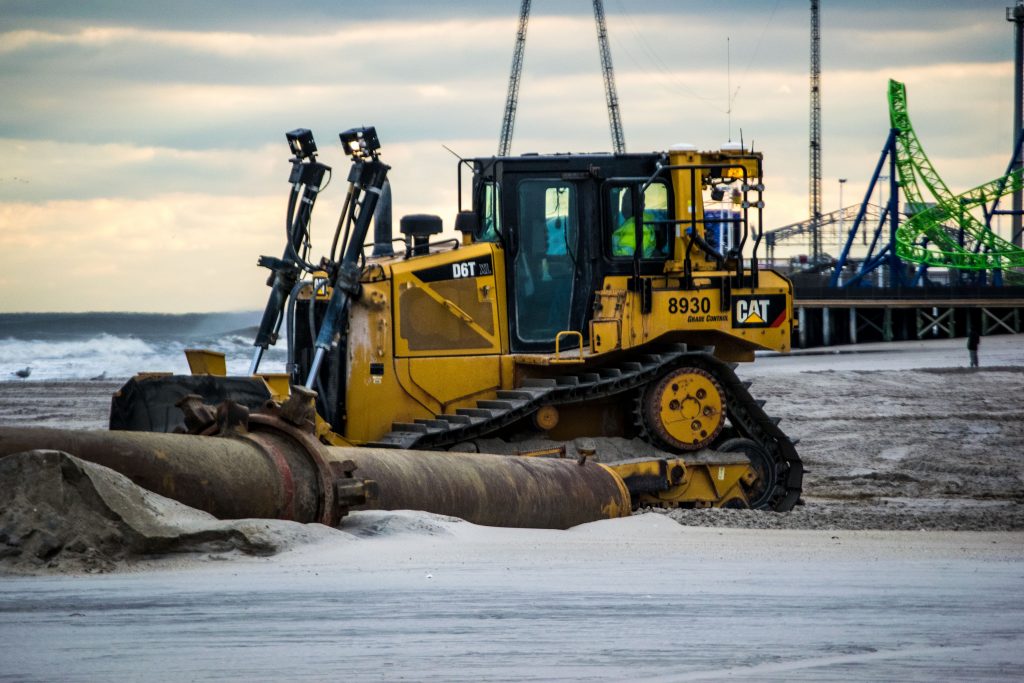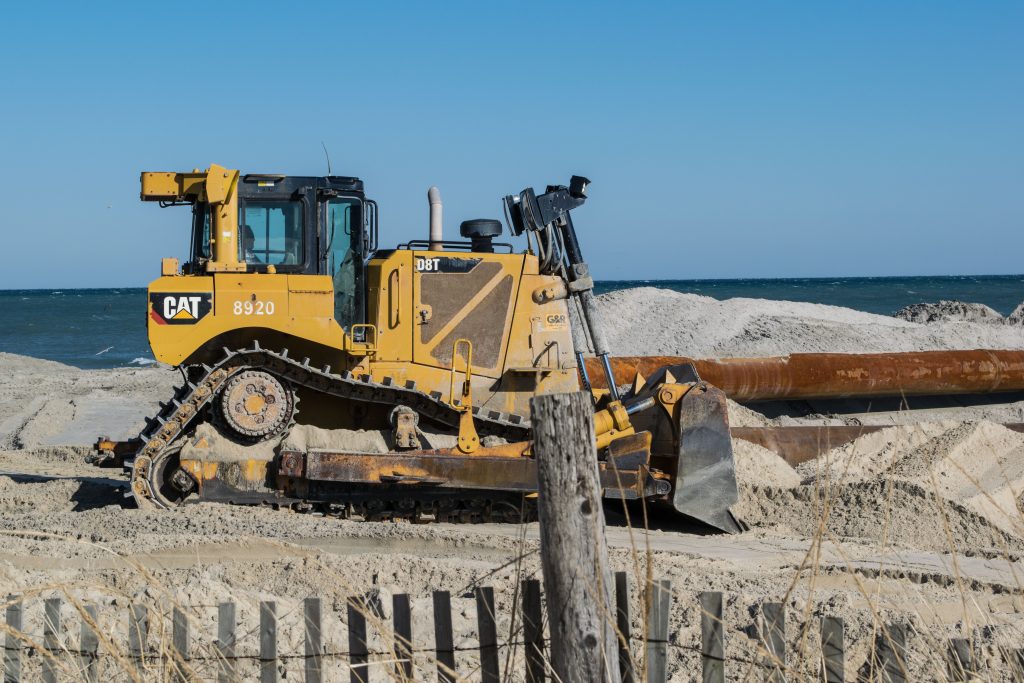A plan to replenish beaches on Ocean County’s northern barrier island continues to be in flux, and a plan that has experienced budgetary and bidding issues for nearly a two years may ultimately have to go back to the drawing board.
After it had been announced that the project would be unlikely to start until 2023, and last into 2024, local leaders began putting pressure on their federal counterparts to move the effort along, especially in light of hundreds of thousands of dollars spent annually by local communities repairing beaches themselves after winter storms. Last year, Toms River was able to stave off fee increases only because of a lack of snow, which allowed officials to use its left-over snow plowing allotment to repair dunes and beach entrances.
Now, the contracting and bidding portion of the project as specified will at least linger into 2024 – if not abandoned altogether and re-bid.
“The prior bidding is still under protest by one of the bidders,” said Steve Rochette, Public Affairs Officer for the U.S. Army Corps of Engineers Philadelphia District. “We anticipate receiving a response/decision to this protest from the Government Accountability Office (GAO) after Christmas.”
The project is now making its way through the administrative protest process in defense procurement policy for the second time. Initially, bids were received that officials said came in over budget. One protest resulted, and nearly as soon as that was settled, another protest was filed. Details on the protests themselves were not available, but it is commonly-known that, historically, only two firms are capable of carrying out major beach replenishment projects on the east coast: Weeks Marine and the Great Lakes Dredge and Dock Company.
Following such a long wait and repeated trouble with the contracts, Rochette said the status of the project as a whole may be in limbo even after the GAO determines the outcome of the current dispute.
“At this time, we cannot estimate when or if a new due date for revised proposals will be established or a new solicitation may need to be reconfigured and resolicited in the future,” he said. “This will depend upon GAO’s findings/recommendations.”
Rochette said he would likely have an update shortly after the turn of the new year.
Local officials have said the project is vital, not only because of its safety impact during storms, but because damage from winter storms have left local municipalities with significant bills after every winter in known “trouble spots” that were supposed to have been granted extra attention and re-engineering in the replenishment project that would use past data to prevent recurring erosion issues. In particular, Toms River has spent hundreds of thousands of dollars on sand deliveries, the reconstruction of beach entrances and fencing and pathways before the last several summer seasons began.
In nearby Brick Township, one block of beachfront in the Normandy Beach section was closed by township police after a mid-summer storm, after they deemed it too dangerous to access. That entrance, likewise, was repaired by the municipal government. The southernmost blocks of Lavallette and a few streets in Bay Head have also seen beaches deteriorate in some circumstances, though Lavallette has largely avoided the bulk of the erosion and, arguably, has benefited from larger crowds in recent years.
A fresh contract could also bring into question efforts to ease the financial burden to local communities, which were to be responsible for a portion of the $60 million contract after New Jersey officials refused local mayors’ requests to use federal infrastructure grants to cover millions in costs that would be paid directly by local taxpayers. With cooperation from local towns at risk, Ocean County announced in Jan. 2023 that it would fund the $7,550,000 local cost for the project, which is spread across the northern barrier island communities from Point Pleasant Beach to South Seaside Park.
The county funding will be paid directly to the state Department of Environmental Protection, however there is a chance that funding will have to be re-authorized by a new Board of County Commissioners, or modified in a case where the overall cost of the project changes.
The total project is estimated to cost about $60 million. The U.S. Army Corps of Engineers will pay $30 million, with the remaining $30 million coming from the state and local share.

Advertisement

Police, Fire & Courts
Cops: Juvenile Arrested After 118mph Joy Ride in Seaside Heights, Toms River Kills 2

Seaside Heights & Seaside Park
Seaside Heights Mourns Passing of Boardwalk Legend, Still Working Into His 90s












